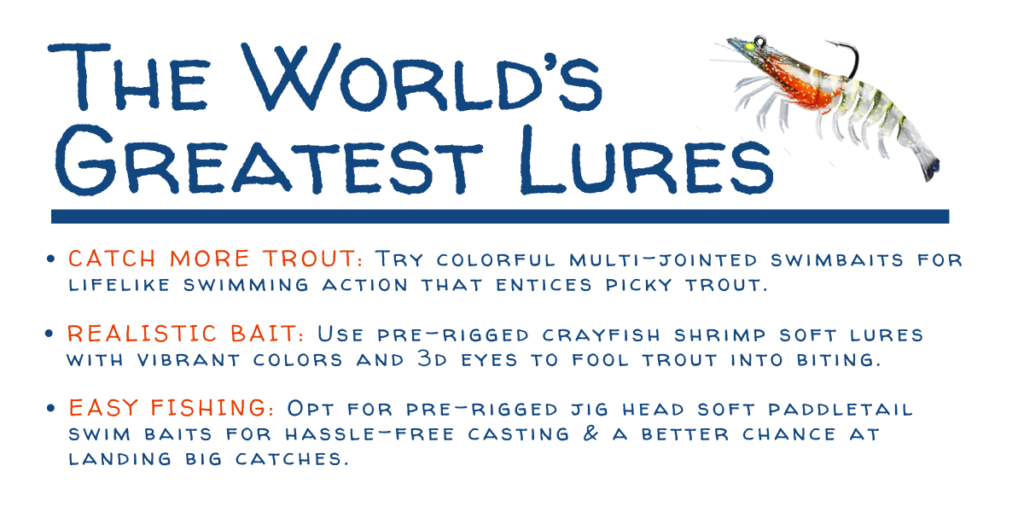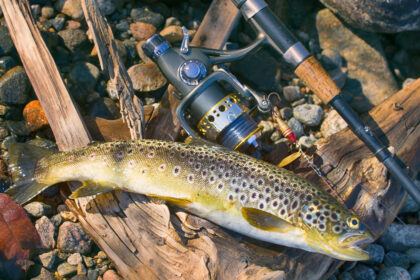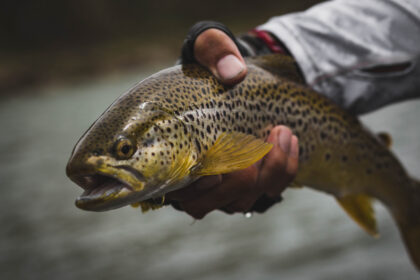Trolling for trout is a popular fishing technique that involves dragging lures or baited hooks behind a moving boat. This method allows anglers to cover a large expanse of water, increasing their chances of enticing trout to strike. Trolling is commonly used in lakes, reservoirs, and larger rivers where trout tend to roam in search of food.
To troll for trout, anglers typically use a trolling rod and reel setup, along with specialized lures or bait. The boat is usually moving at a slow and steady speed, typically ranging from 1 to 3 miles per hour, to create a realistic presentation of the lure.
When trolling, it’s important to vary the depth at which the lure is presented. This can be achieved by adjusting the amount of line let out or by using additional weight to control the depth. Trout can often be found at different levels in the water column, so experimenting with different depths can increase the chances of success.
The choice of lures for trolling can vary depending on the angler’s preference and the specific trout species being targeted. Common lures include spinners, crankbaits, minnow imitations, and spoons. In this article, we will be focusing on trolling for trout with spoons, how spoons compare to other bait, and whether or not using spoons is right for your fishing expedition.

What are “Spoons”?
Spoons are metal lures shaped like, you guessed it, spoons! They have a concave shape that creates erratic movements when retrieved through the water. The reflective surface of spoons mimics the flash of baitfish, attracting trout from a distance. Their versatility allows anglers to fish them at different depths and speeds, making them suitable for both still water and moving streams.
The Advantages of Using Spoons vs. Other Bait
When it comes to comparing spoon fishing to other bait options, it’s important to consider that each method has its own strengths and can be effective in different situations. Here are a few factors to consider:
Versatility:
One advantage of fishing with spoons is their versatility. Spoons can be used in both still water and moving streams, making them a flexible choice for various fishing environments. They can be fished at different depths and speeds, allowing anglers to adapt to changing conditions and target trout at different levels in the water column.
Flash and Attraction:
Spoons excel at mimicking the flash and movement of injured baitfish, which can trigger aggressive strikes from trout. The reflective surface of spoons creates glimmers of light that can catch the attention of trout from a distance. This makes spoons particularly effective in clear waters or when trout are actively feeding on baitfish.
Aggressiveness of Strikes:
Trout often exhibit an aggressive nature when striking spoons. The darting and wobbling action of spoons can provoke an instinctual response from trout, causing them to strike with force. This can result in exciting and memorable fishing experiences.
Lure Size and Weight:
One consideration when using spoons is the size and weight of the lure. While this can vary depending on the specific spoon used, larger spoons may be better suited for targeting larger trout or fishing in deeper waters. However, smaller spoons can also attract bites from hungry trout, especially in situations where they are feeding on smaller prey.
Alternative Bait Options:
It’s worth noting that there are other bait options available that can be equally effective in enticing trout. These can include artificial baits like soft plastics, spinners, and crankbaits. Each option has its own unique characteristics and can be successful depending on the fishing conditions, preferences of the trout, and the preference of the angler.


When is Using Spoons Not Ideal?
While spoons can be an effective lure for trolling for trout in many situations, there are a few instances where they may not be the best choice. Here are some scenarios when anglers might opt for alternatives to spoons:
Shallow Water:
If you’re fishing in very shallow water, such as streams or rivers with minimal depth, using spoons may not be ideal. The concave shape of spoons and their tendency to sink deeper may cause them to snag on rocks, vegetation, or the riverbed. In such cases, using shallower-running lures like spinners or floating crankbaits can be a better option.
Subsurface-Feeding Trout:
When trout are primarily feeding below the surface and targeting baitfish or insects at mid-depths, using spoons may not be as effective. In these situations, anglers may opt for lures such as diving crankbaits or weighted soft plastics that can be presented at the desired depth to entice the trout.
Finicky or Spooky Trout:
Some trout can become cautious and selective, especially in heavily fished waters. In such cases, spoons’ flashiness and aggressive action may not always attract their attention. Anglers may need to switch to more subtle presentations like flies, small jigs, or natural-colored soft plastics to entice strikes from these finicky trout.
Specific Prey Imitation:
There may be times when trout are specifically keying in on certain types of prey, such as aquatic insects, minnows, or crayfish. In these situations, using lures that closely resemble the prey item, such as nymph flies, minnow imitations, or crayfish-shaped soft plastics, can be more effective than spoons.
Cold Water or Sluggish Trout:
During colder water temperatures or when trout are less active and sluggish, using a slower-moving lure presentation can be more effective. The fast, darting action of spoons may not always elicit strikes in these conditions. Switching from trolling to jigging, using slower-moving lures like jigs, soft plastics, or jerkbaits can be a better choice.

Is Trolling for Trout with Spoons Right for You?
Deciding whether trolling for trout with spoons is right for you depends on several factors. Consider the following:
Fishing Style:
If you enjoy covering a large expanse of water and exploring different depths, trolling with spoons can be a great choice. It allows you to actively search for trout and provides the opportunity to target them at varying depths.
Targeted Trout Species:
Different trout species may respond differently to various lure types. Research the specific trout species in your area and their feeding habits to determine if they are known to be attracted to spoons. Local fishing reports or talking to experienced anglers can provide valuable insights.
Water Conditions:
The water conditions in your fishing location can influence the effectiveness of using spoons for trolling. Clear water and situations where trout are actively feeding on baitfish make spoons a good choice. However, if the water is shallow, heavily vegetated, or the trout are not actively chasing prey, other lure options might be more suitable.
Personal Preference:
Every angler has their own preferred fishing techniques and lure preferences. Some anglers enjoy the action and versatility of spoons, while others may prefer different lure types. Experimenting with different lures and techniques can help you discover what works best for you.
Experience Level:
Trolling with spoons requires some knowledge of boat control, understanding trolling speeds, and adjusting lure depth. If you’re new to fishing or trolling, it might be beneficial to start with simpler techniques before venturing into spoon trolling.
Using spoons allows for versatility and experimentation. Anglers can select from a variety of spoon sizes, shapes, and colors, tailoring their approach to match the conditions and preferences of the trout. Remember that trout fishing is a dynamic activity, and being open to trying different techniques and different lures can lead to more successful and enjoyable experiences on the water.



